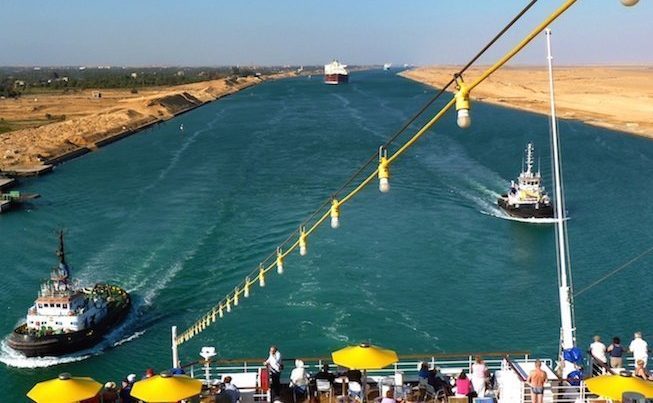
Suez Canal financial results fall flat
Revenues from the Suez Canal during September show a decline on last year’s figures, in spite of Egypt’s recently completed $8.5bn canal expansion project.
The figures are bad news for Egypt, for which the Suez Canal is a main source of foreign currency. Egypt’s foreign currency reserves fell almost 10% in September and the Egyptian pound has been devalued twice recently.
Monthly revenue from the canal was $448.8m in September, down $13m on the previous month and a 4.7% decrease on September of last year, when the figure was $469.8m.
At the end of September, the year-to-date toll income was $3.9bn, down 5% in comparision to the $4.1bn posted at the same point in 2014.
Results for August 2015 were even worse. Revenues stood at $462.1m, some 10% lower compared to $510m in August 2014.
The canal has been expanded to allow the simultaneous passage of vessels going both north and south, and reopened on August 6 this year.
In August 2014, Egypt’s finance minister Hany Kadry Dimian said the government expects revenue from the Canal to more than double before 2018 to more than $13bn, following the expansion project.
Falling vessel traffic in the Asia-Europe container trade lane has negatively affected the canal’s results. Today, an 18,000-teu Maersk EEE containership went into hot layup for six weeks, in response to the declining number of sailings on 2M’s Asia-Europe schedules.
Last month, the World Trade Organization (WTO) cut its forecast for global trade in 2015 by half a percentage point, saying world exports and imports should now rise by only 2.8% this year, down from a previous forecast of 3.3%.
Declining imports in China, volatile currency markets, falling commodities prices, volatile financial markets and US monetary policy all influenced the WTO’s outlook.